Among the better known American fighter groups of the Second World War, the 332nd Fighter Group made a name for itself in Italy.
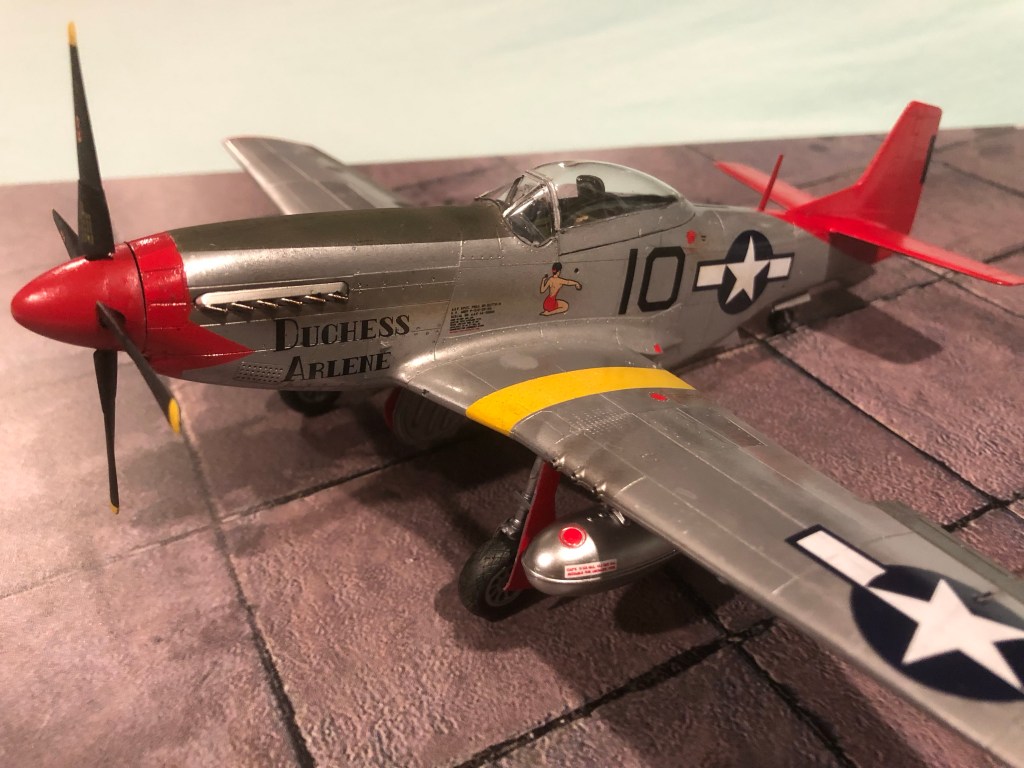
Let’s take a look at a plane and a pilot that saw action in the Group’s largest combat.
The 332nd Fighter Group is best known for its unique role in the segregated Army Air Force of the time. But the Group has an interesting combat history too.
They flew four different types of American fighter in combat. Initially they were equipped with P-40 Warhawks. Early in 1944, they briefly re-equipped with P-39 Airacobras then P-47 Thunderbolts. Because the Thunderbolts were hand me downs from the 325th Fighter Group, the famous Checkertails, the tails were painted over in red which became an identifying symbol of the group. In July of that year they were issued Mustangs and entered their best known phase.
Under the command of Benjamin O Davis the 332nd Fighter Group became close escort specialists. The importance of this role had become apparent as the role of fighter escort had come to be an exercise in pursuing the Luftwaffe to extinction. But the pursuit was hard on bomber crews. In the 8th Air Force it became practice to assign groups to close escort on a mission basis. But in the 15th Air Force, that job fell entirely to the 332nd. This quickly made them very popular with bomber crews and earned them the nickname “Red Tailed Angels”.
This undoubtedly did cost them kills, by that measure they weren’t a highly successful group.
But bomber crews felt that kills were not the most important measure and the Red Tails were a clear favorite. Performance in this area was competent and professional; and was often cited in what led to complete desegregation of the US military in 1948.
There is a claim that no bomber under their escort was ever shot down. Such a thing is impossible to prove with the shuffling of escorts and groups over the course of a mission, and Col Davis has said he never claimed that and doesn’t believe its true. But the bomber crews of the 15th Air Force believed it.
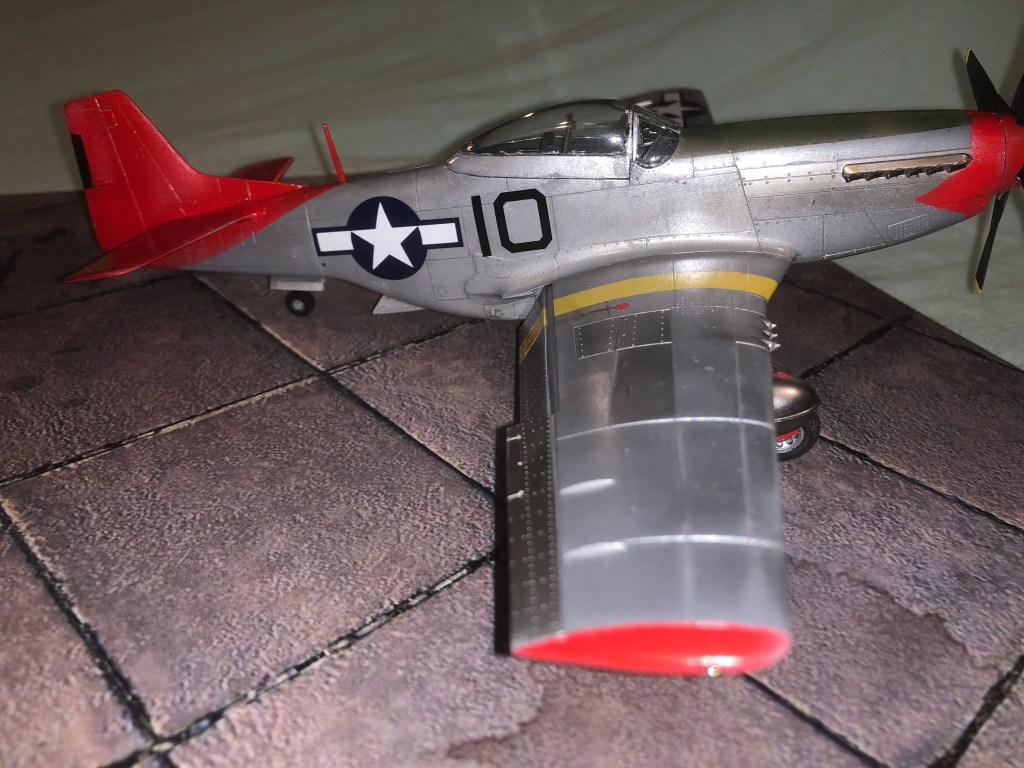
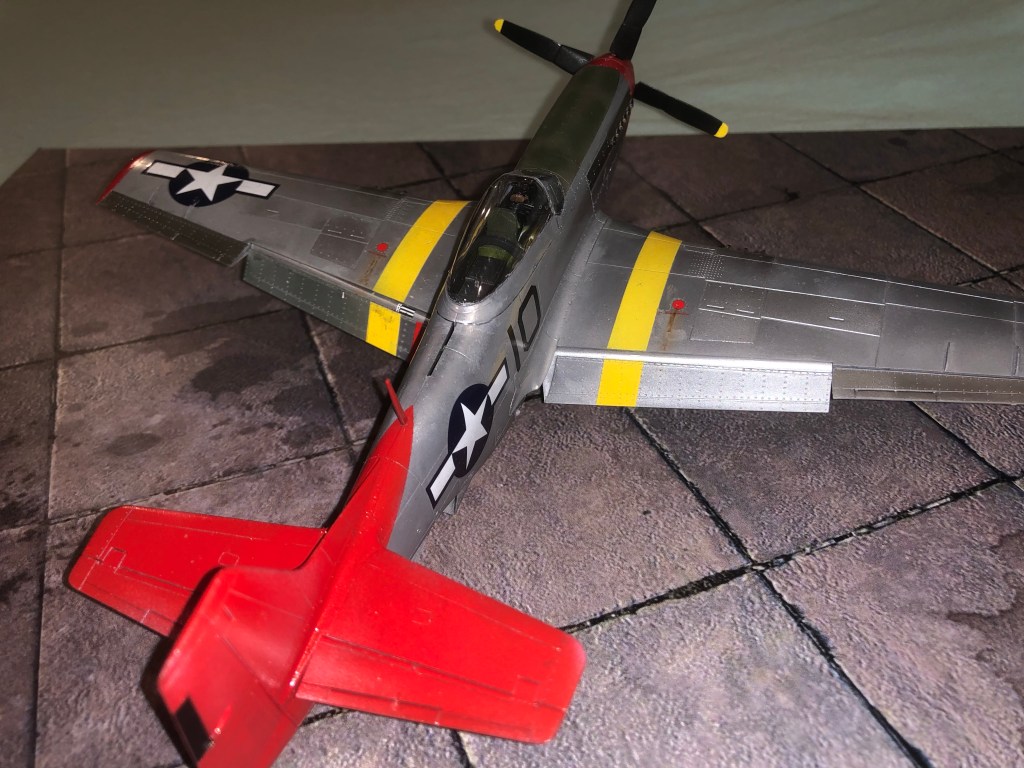
The 332nd Fighter Groups longest mission, perhaps its best known, came on March 24 1945 when the 15th Air Force was targeting Berlin. They relieved the 1st Fighter Group (in P-38s) over southern Germany, and were supposed to be relieved by Mustangs of the 31st Fighter Group just short of Berlin (even if the Mustang had the range to get there, they couldn’t do it by zigzagging and throttling back to stay with the bombers the whole way). But the 31st was running late and the Red Tails were working overtime when they were attacked by 20 or so Me 262s of JG 7. Three of the jets were shot down, and the bombers were protected. The 332nd won a Presidential Unit Citation for their 1600 mile mission.
The Red Tail’s single most successful combat came on March 30, 1945. Col. Davis led 43 Mustangs on a sweep over Munich. They had just started to break into smaller elements for strafing when over a dozen fighters in two mixed groups of Messerschmitts and Focke-Wulfs dropped on them from above. The Mustangs quickly turned the tables however and downed thirteen attackers for only a single loss.
The plane shown here, Duchess Arlene, was flown by 1st Lt Robert W Williams who scored two Fw 190s that day. Eleven other pilots each claimed a single kill. They then turned to strafing and destroyed three locomotives plus several rail cars and other transport.
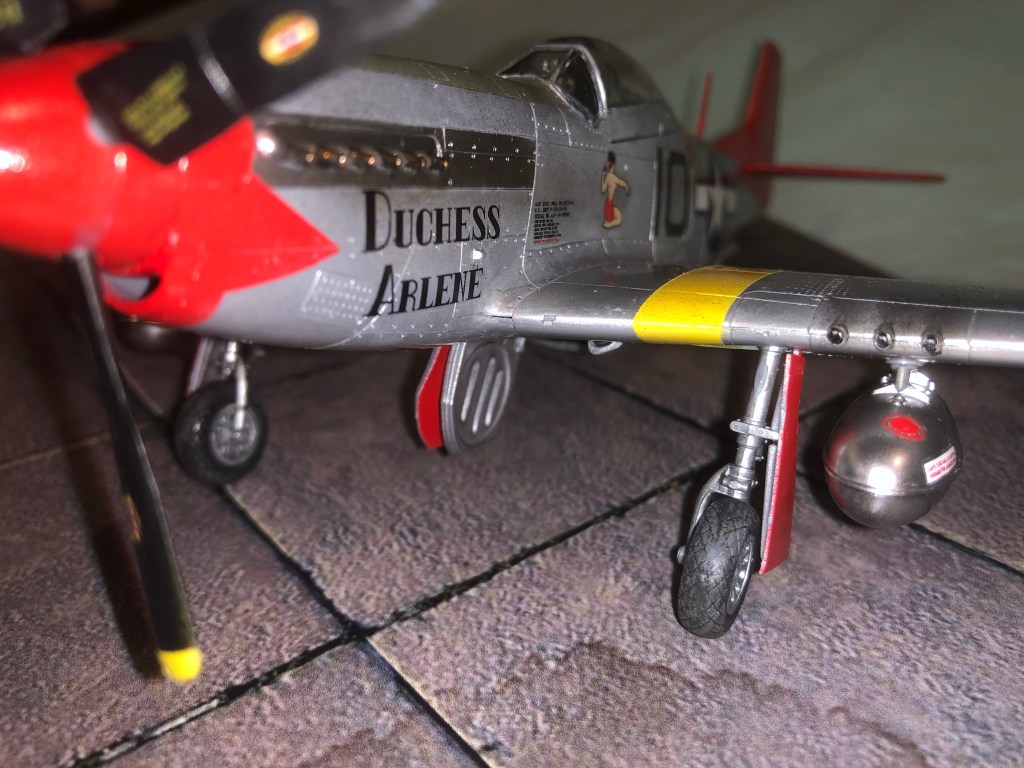

Lt Williams flew a full tour of 50 missions, most of them in this, his personal mount named for his girlfriend back home in Iowa. Post-War he went into acting and made several television appearances in the 1960s (Man From UNCLE was the only show I’m familiar with in his filmography). He also wrote the screenplay for the HBO movie “The Tuskegee Airman”; Laurence Fishburne’s character “Hannibal Lee” was based on himself. Robert Williams passed away in 1997.
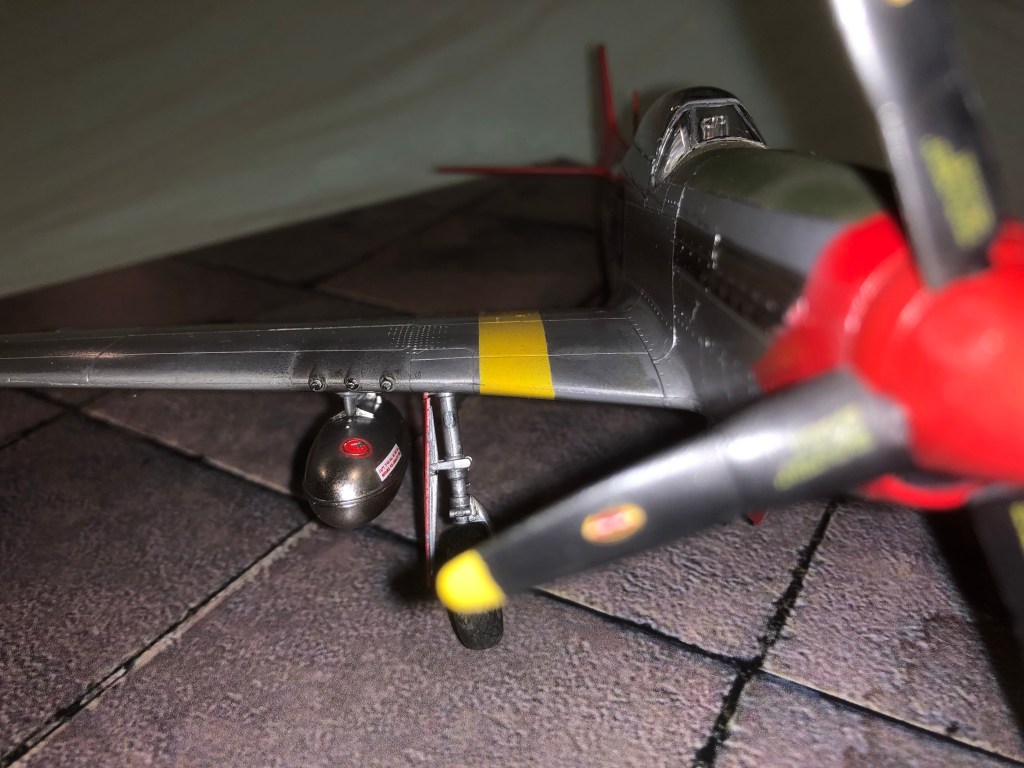
This is the Tamiya kit. It was a Special “Tuskegee Airmen” Edition that included the decals.
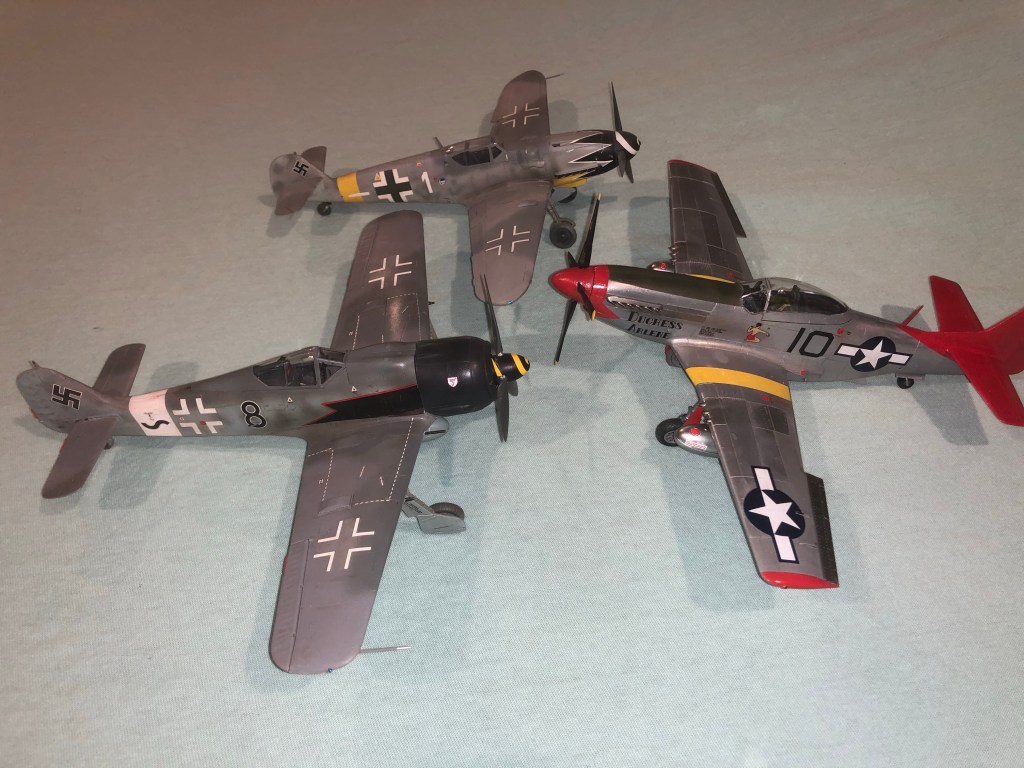


The 332nd Fighter Group must have been so proud to have proved so many people wrong. A really interesting post, thank you for sharing it with us.
They definitely had plenty to be proud of.
I was able to see a group of them speak at a work function several decades ago (it was the ’90’s). They did have some interesting stories. They were not fans of the P39, but to a man said the Mustang was the best plane they ever flew.
That seems to be a pretty unanimous feeling among US combat pilots. I can’t think of another US combat outfit that flew such a range of aircraft so their perspective is particularly valid.
I remember reading a memoir several years back by a pilot who just loved the P-39. But it was his first fighter after training, and he flew it on patrols over the Canal Zone. He later went on to Thunderbolts and Mustangs, but he loved the Airacobra. Presumably he didn’t have worry about its loss in performance at altitude and was taught to avoid maneuvers that would lead to a spin. But for pilots whose lives depended on it, it was far less liked!
I love the details on these models, and the look at their history- thanks!
The 332nd has been on my “learn more about them” list for a while! Incredible stories.
No doubt they served well and capably, in spite of an extra burden on them. In pure military terms I’d say they’re over-represented in writings of the times. The good news is, that makes it easy to learn their story. The bad news is, it’s difficult to get a proper perspective on them and their contributions.
They may be the only fighter group with their own movie, and they have two. Both are passably good. “The Tuskegee Airmen” follows their whole history from creation in Tuskegee through service in North Africa and Italy. “Red Tails” is a little more focused just on their time in Italy; it’s more of a pure action-adventure story (better looking, but arguably less important).
I was wondering how the films held up- good to know!
I have really enjoyed presenting things this way. And it leads to me bouncing all over the place thematically and looking and so many different stories, both the well known and not so well known sorts!
It’s a great way to get a broader, varied look at the times!